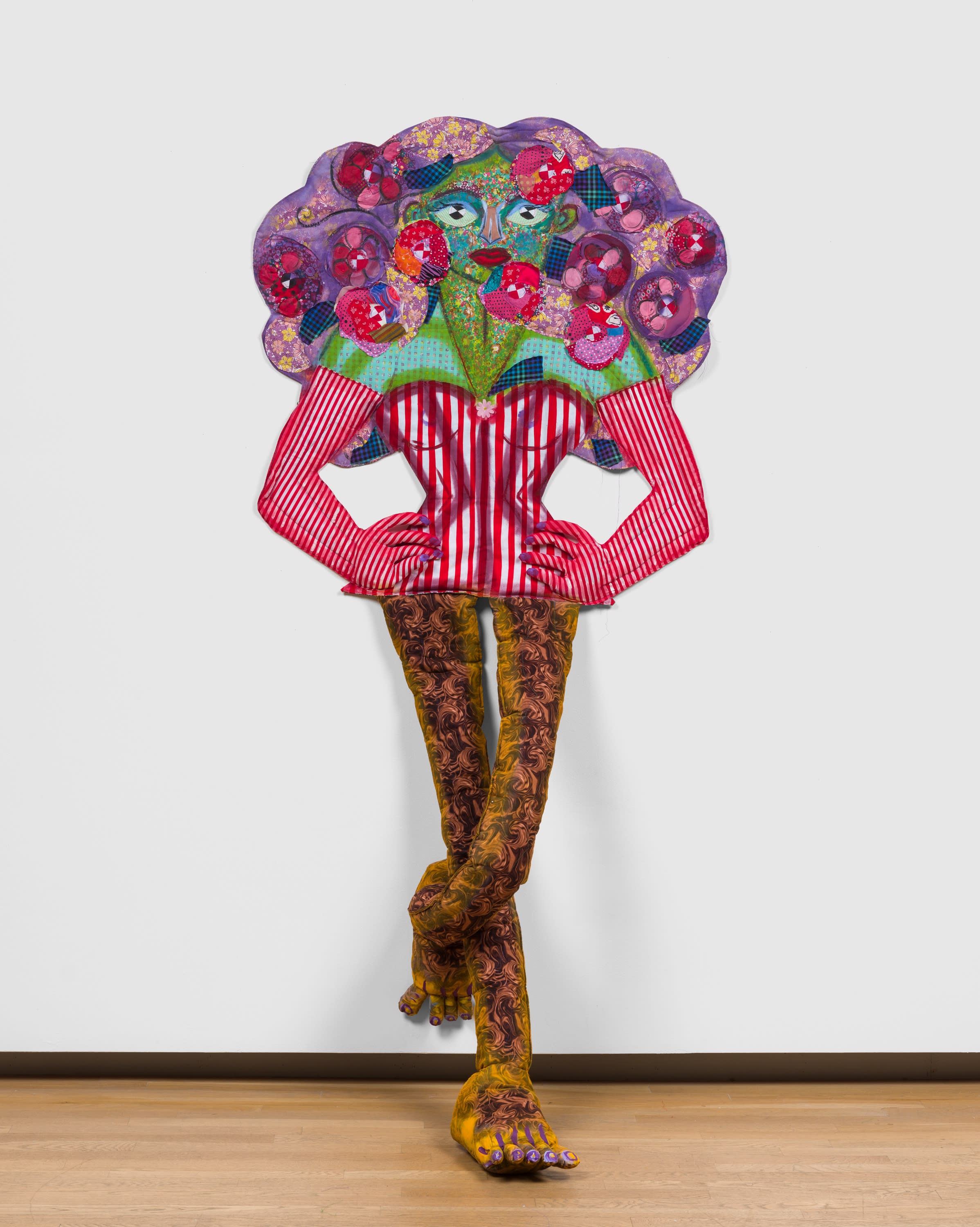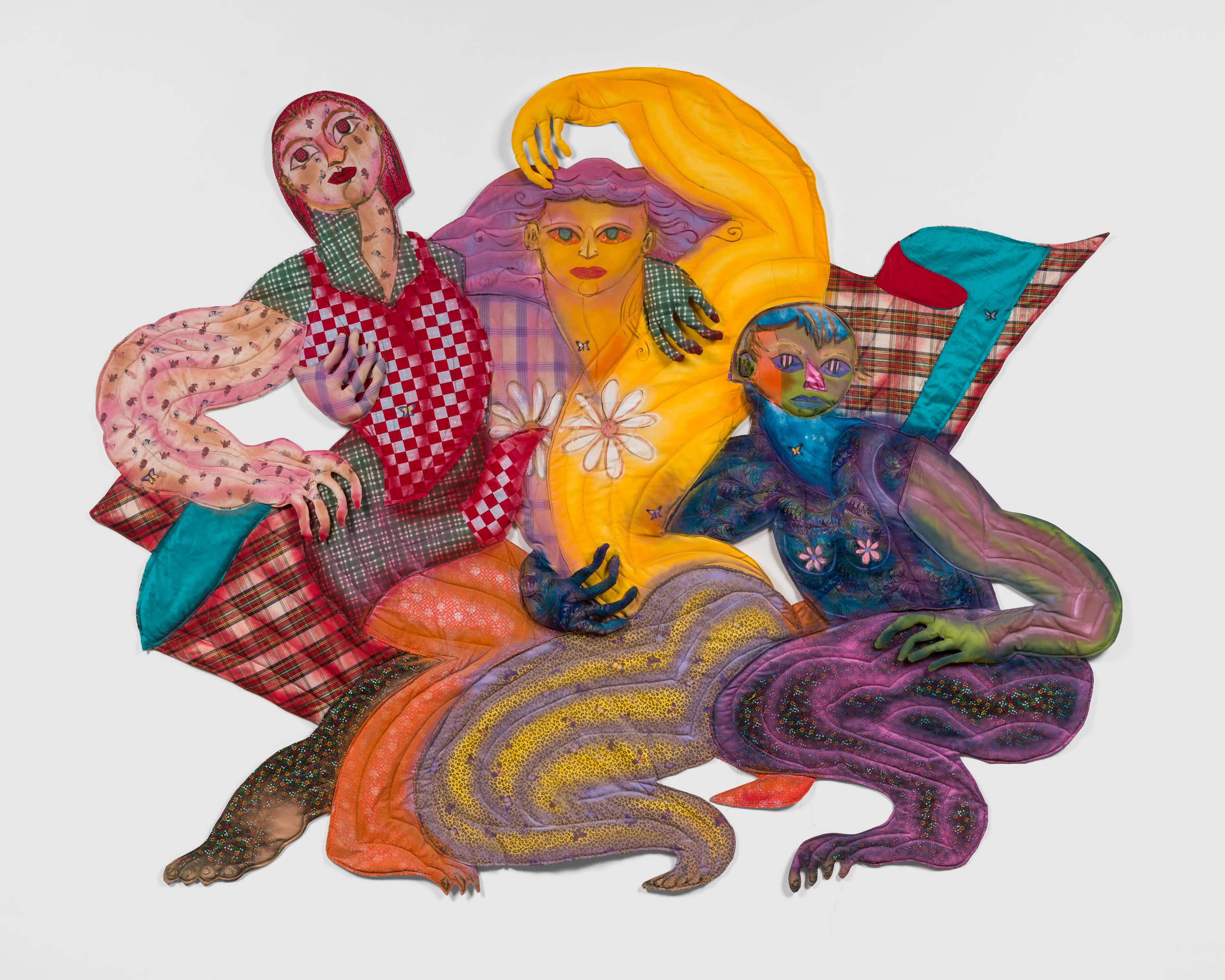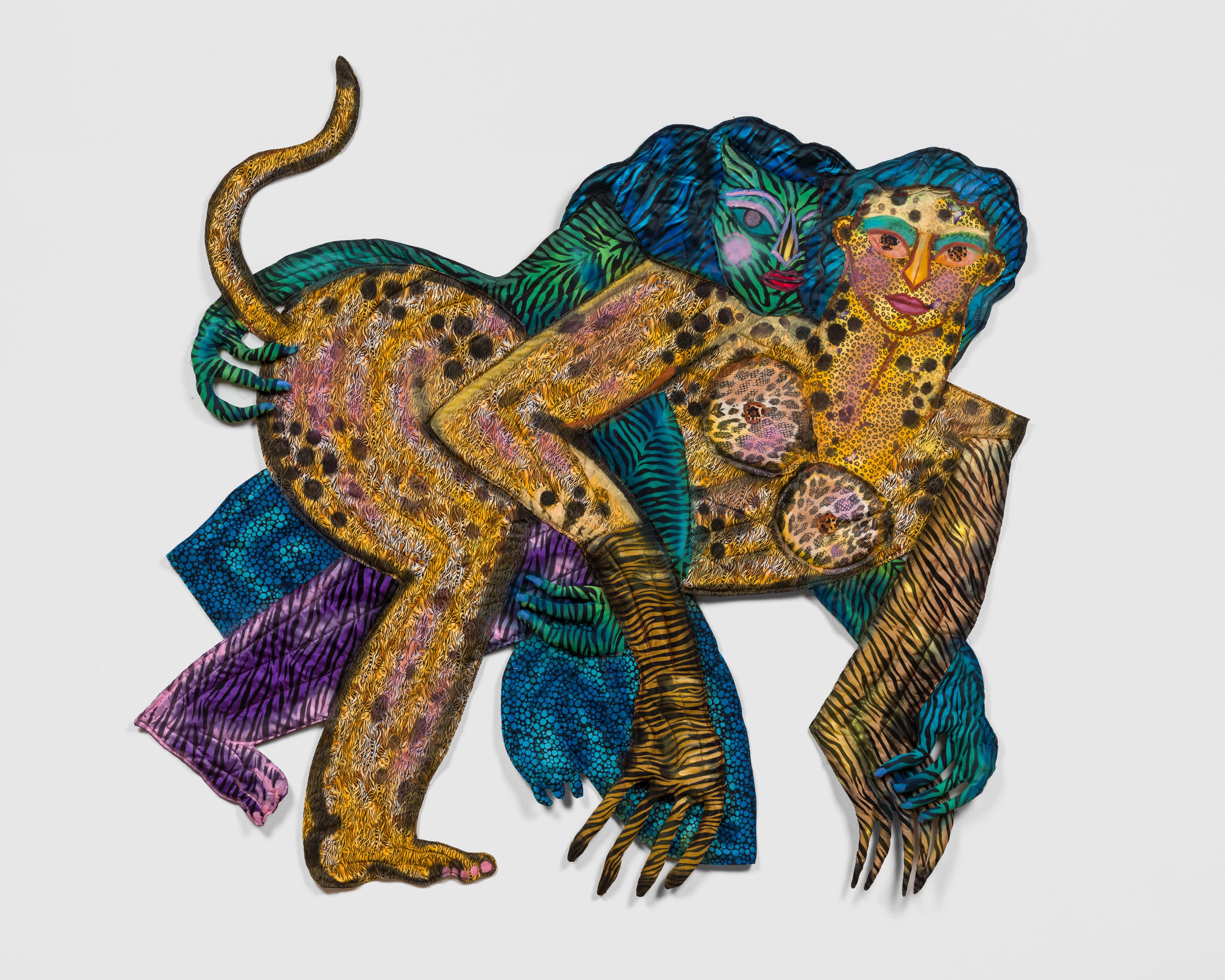
“Pura Mentira,” the title of Oakland-based artist Maria A. Guzmán Capron’s exhibition, is a statement on people’s propensity for multiplicity. Using textiles as her medium, Capron merges the figures in her pieces together, their bodies often winding together to create circles like a colorful ouroboros. Her exhibition reflects on queerness by playing with traditional male and female signifiers. Also inspired by the drama of telenovelas, Capron explores how lies and deception affect our beings and how we present ourselves. “Pura Mentira” asks: Which parts of ourselves do we celebrate, and which parts do we try to push down? As I walked through the show, I found myself thinking: Are the stories that we tell about ourselves really true? Are we deceiving ourselves by denying our multiplicities?

Maria A. Guzmán Capron, No Soy Florero – Margarita, 2023. Fabric, thread, batting, stuffing, spray paint and acrylic paint, 77 x 37 x variable in.Courtesy of the artist and Shulamit Nazarian, Los Angeles.
In No Soy Florero (all works 2023), the figure’s head and torso lie flat on the wall, while its legs are filled with stuffing and emerge slightly from the wall. Floral patterns abound in the figure’s eyebrows, hair and neck; its hands are placed on the cheeks in a shocked expression, though it feels contrived and slightly coy. The title, which roughly translates to “I’m not a vase,” seems to hint at the decorative—at our self-fashioning. Floral patterns do not make one a vessel for flowers; feminine, bright clothing doesn’t make one a purely feminine figure.

Maria A. Guzmán Capron, Desátame, 2023. Fabric, thread, batting, stuffing, spray paint and acrylic paint, 76 x 95 x 3 in. COURTESY OF THE ARTIST AND SHULAMIT NAZARIAN, LOS ANGELES.
A sense of fluidity between genders appears throughout the show. Desátame features three figures crouched together, their limbs long and tangled. The central figure is flanked by feminine characters. A couple of the toes in the group look more like claws, suggesting either animal or otherworldly identities. Capron uses the fabric in clever ways, giving the illusion of flowing hair and fabric unfurling in the wind, lending more drama to the unlikely trio. Capron stitches together these scenes to give her figures, in her words, the “freedom to be constantly changing and becoming.” That “becoming” might also mean giving in to our more wild instincts. Gata Salvaje features fabric with zebra stripes, and a long tail, bringing a wildness to the figures, even while their features still read as human. Each soft sculpture seems to change as you notice another detail here, another tiny piece of fabric there. These creatures are unlike any you would see walking down the street, yet they might also seem eerily familiar.


